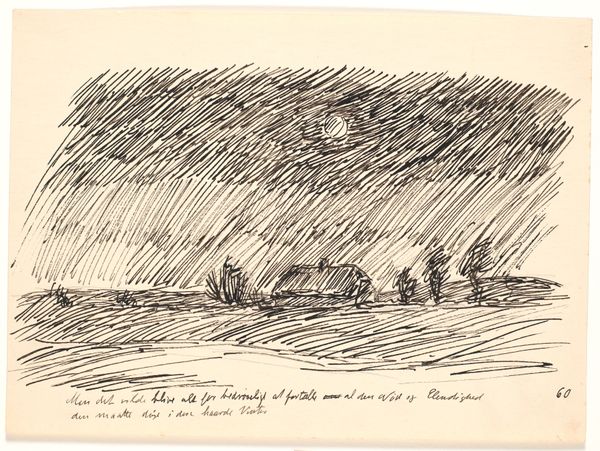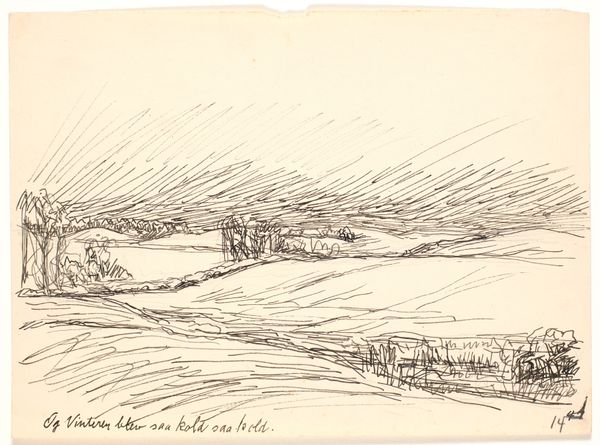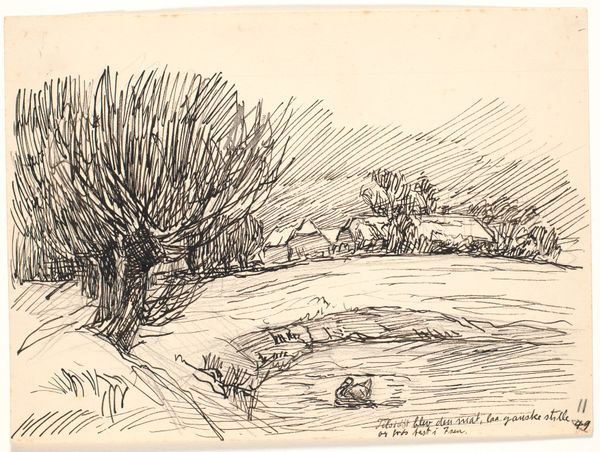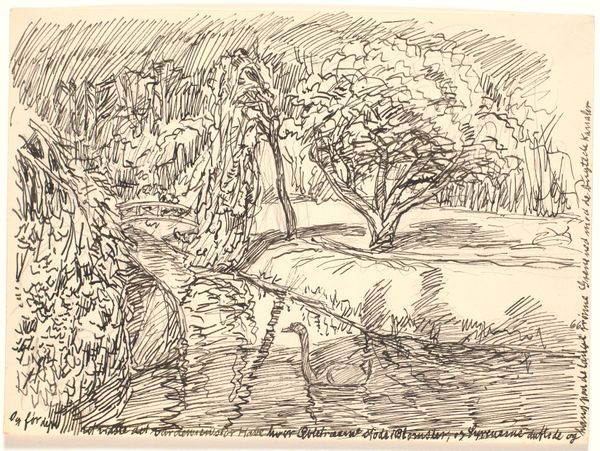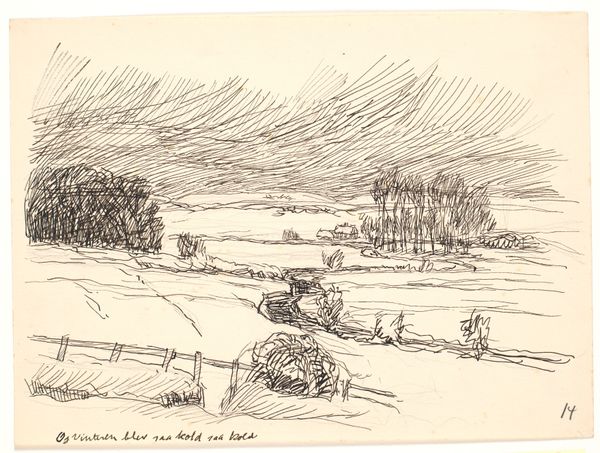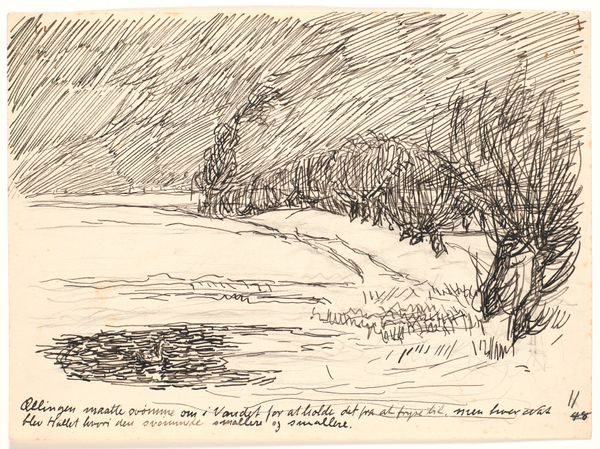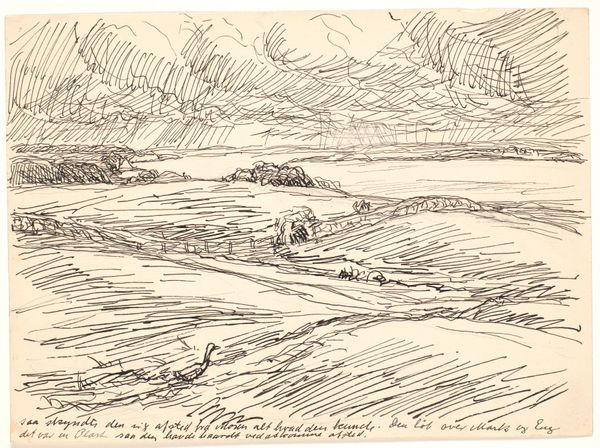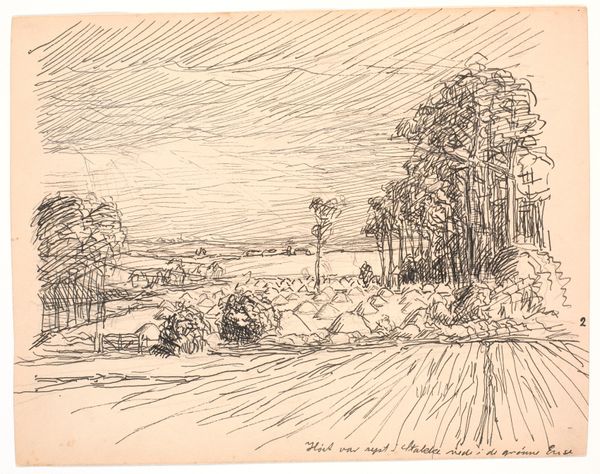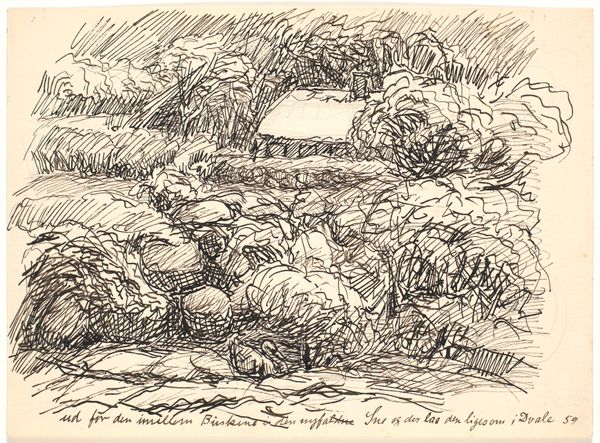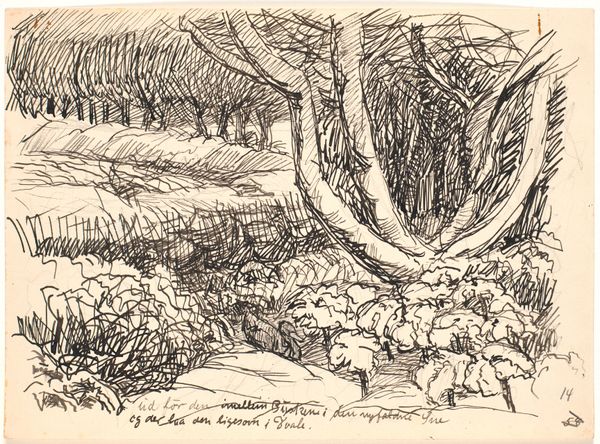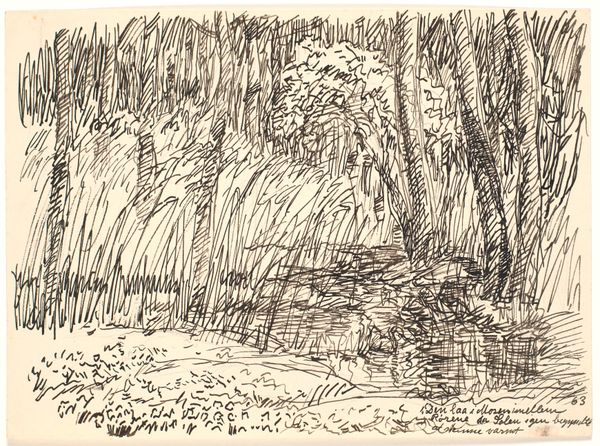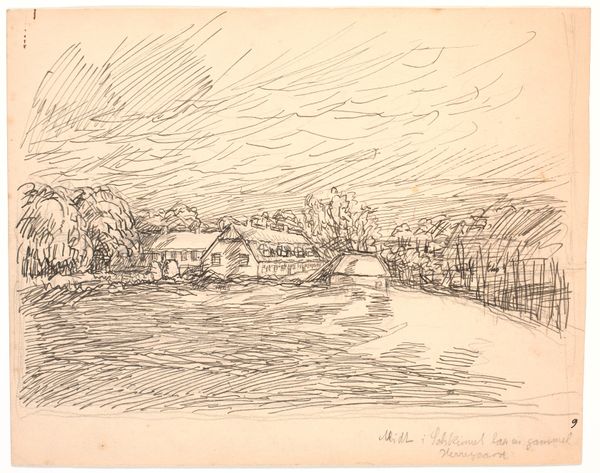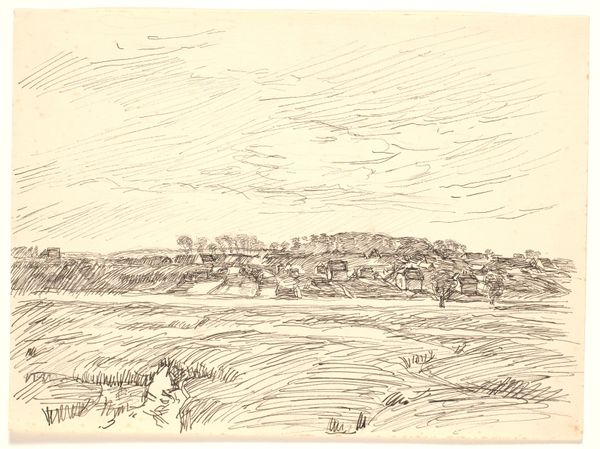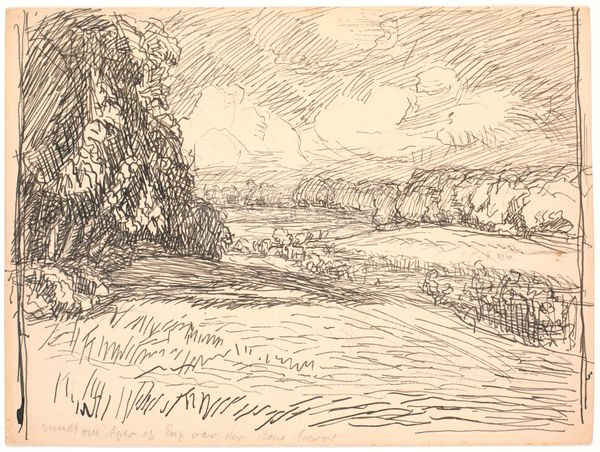
Dimensions: 248 mm (height) x 338 mm (width) (bladmaal)
Curator: Welcome. Here we have Fritz Syberg's "Mod aften naaede den et fattigt lille Bondehus," created around 1928. The museum records indicate this work involves both ink and pencil. Editor: There's such starkness to it! That rapid, almost frantic use of ink creates an impending feeling… like a storm's about to break. Curator: It’s compelling how Syberg uses what looks like hurried pen strokes. We have to consider the broader art environment, especially the shifts happening with Post-Impressionism and a move toward individual expression. The subject— a humble farmhouse—is secondary. It’s about the raw experience of a landscape. Editor: Right. That obsessive mark-making dominates everything. The textures—the roughly rendered thatched roof, the implied wind rustling through the trees—are all built up laboriously, from repetitive strokes. It's clear this wasn't dashed off. Curator: Interestingly, though the subject matter evokes a sort of rural tranquility, there's nothing picturesque here. Syberg was deeply engaged with social issues, which shaped much of his artistic outlook. This rendering could be interpreted as commentary on rural poverty during that period. Editor: And look at the lone figure approaching the house! It adds a human element to the toil, to labor, and the conditions of the material world that dictate their lives. This isn't some romanticized countryside idyll. The sheer volume of work makes that pretty plain. Curator: I agree. By focusing on such a commonplace scene, Syberg directs our gaze toward the lives of everyday individuals and the dignity of work. Museums elevate work such as this by presenting artwork that portrays marginalized people—something we should pause to reflect upon. Editor: Absolutely. It's a fantastic reminder that art is about making things visible. In Syberg’s world, this scene is rendered and represents an immense physical, emotive impact. Curator: It does prompt us to reconsider history, not just in terms of political and social changes but as told through ordinary moments and material circumstances, carefully preserved for contemplation. Editor: Thank you. Hopefully, visitors gain a heightened sense of the artist’s skill and message from exploring his work.
Comments
No comments
Be the first to comment and join the conversation on the ultimate creative platform.
